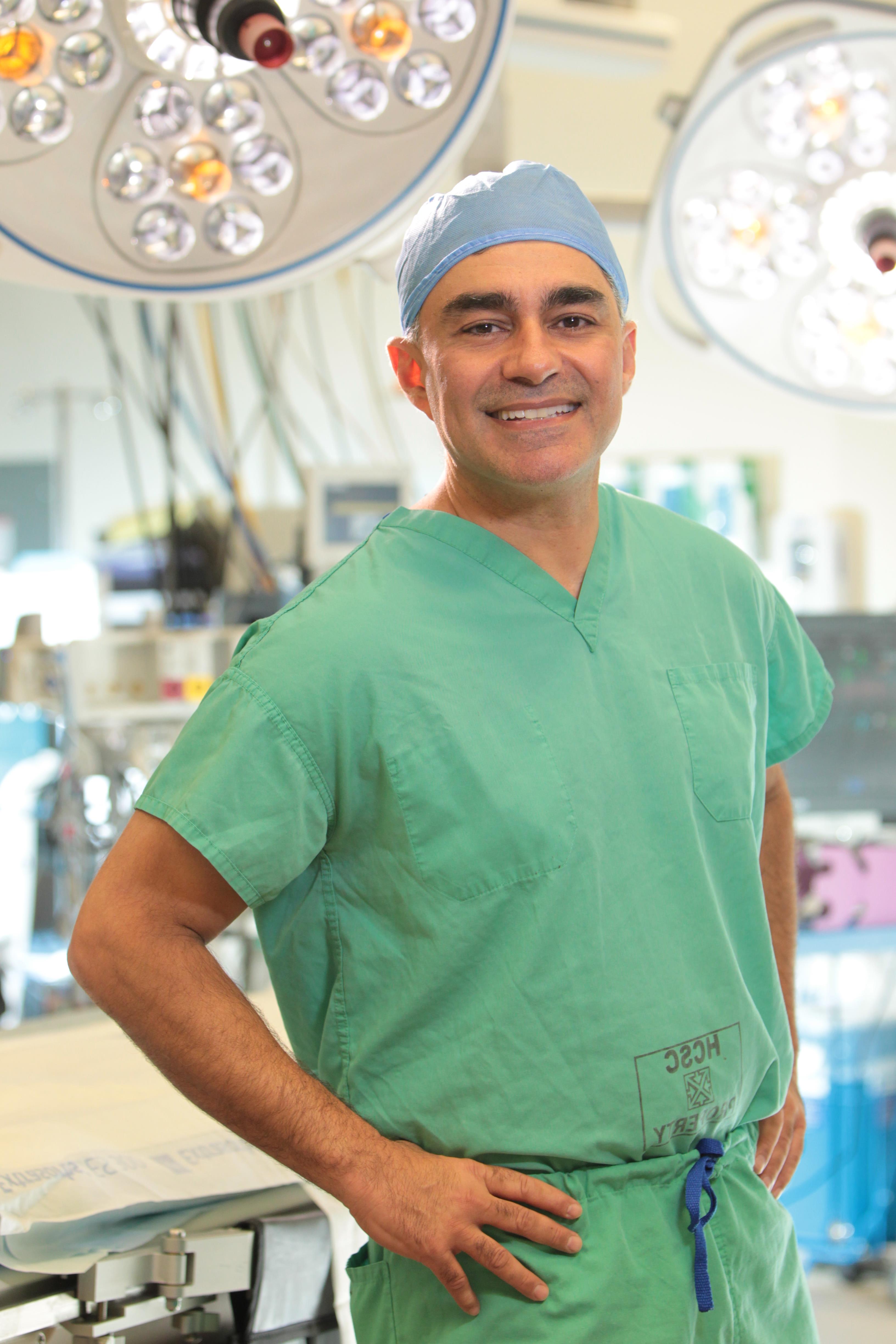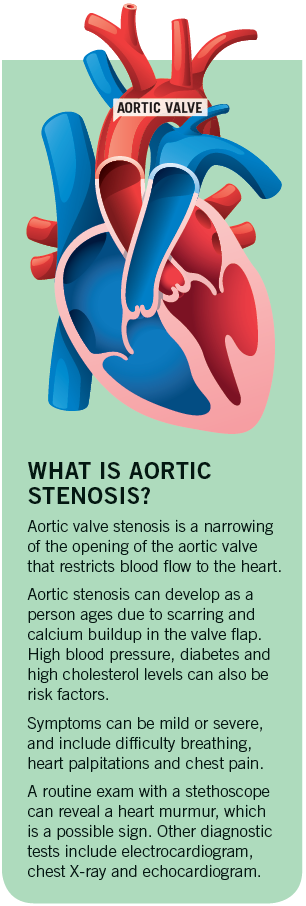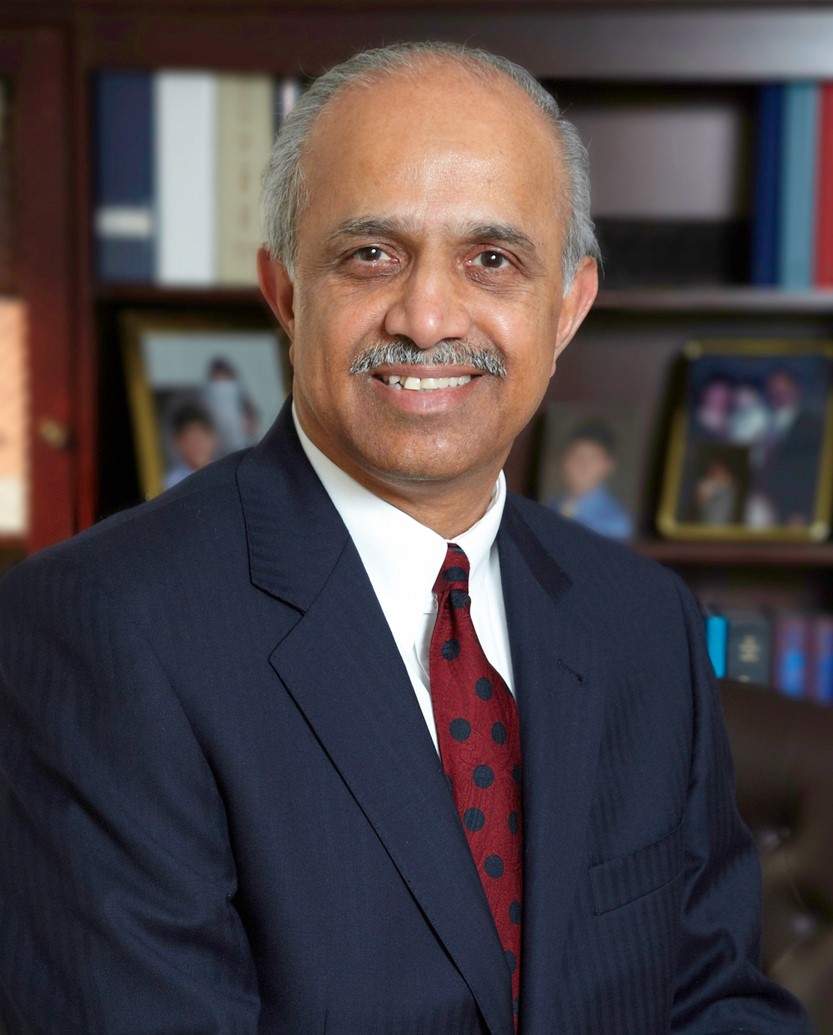A minimally invasive surgery can be the answer for aortic stenosis.

Arash Salemi, MD, Clinical Chairman of Cardiothoracic Surgery for RWJBarnabas Health, Northern Region, has performed more than 2,000 TAVR procedures.
The true value of innovative heart surgery technology often comes down to the look in a patient’s eye.
“You can see the worry in the patient’s eyes when they come for an evaluation,” says board-certified surgeon Arash Salemi, MD, newly appointed Clinical Chairman of Cardiothoracic Surgery for RWJBarnabas Health, Northern Region, and a member of RWJBarnabas Health medical group.
In the case of patients with aortic stenosis, the valve in the aorta—the large blood vessel that carries blood from the heart to the rest of the body—has narrowed, hindering the body’s blood supply. “They’ve been told that, left alone, their valve eventually will get them, and that is correct,” Dr. Salemi says.
“By far the most gratifying piece of what I do is seeing the relief in the eyes of patients and their families as that weight is lifted after successful surgery.”
A NEW OPTION
Dr. Salemi and colleagues at Saint Barnabas Medical Center (SMBC) can now provide that relief to more aortic stenosis patients, thanks to a technology known as transcatheter aortic valve replacement (TAVR). This minimally invasive procedure anchors a new aortic valve on top of the existing one via a catheter that’s inserted in an artery in the groin and threaded to the heart through blood vessels.
“People ask me how TAVR is different from open-heart surgery, and I’m especially qualified to answer, because I do both,” says Dr. Salemi, who performs all forms of adult cardiac surgery and is an international leader in structural heart disease with a particular interest in valvular disorders.
Open-heart surgery typically is a three-to-four-hour operation in which a patient undergoes general anesthesia, has an incision to open the chest, is put on a heart-lung machine, has the heart stopped and restarted, spends five to seven days in the hospital and takes about a month to recover.
In contrast, TAVR usually takes about one hour and the patient is sedated, doesn’t require general anesthesia or a breathing machine and goes home the same day or the next. “You’re off to the races after a day or two resting at home,” Dr. Salemi says. “I had a patient recently send me a video of himself teaching a spin class 13 days after having his TAVR.”
SAVING MORE LIVES
Prior to TAVR, treatment for aortic stenosis had significant limits. “There is no medical therapy, diet or exercise for this condition,” Dr. Salemi says. “The only available therapy was valve removal and replacement with open-heart surgery.”
Even so, he says, up to two-thirds of aortic stenosis patients over age 75 were not given open-heart surgery. The reason: Many older people with aortic stenosis also have other serious conditions or are frail in ways that could complicate a major surgery.
This care gap was significant for a large group of patients. “Aortic stenosis is a progressively worsening disease,” says Dr. Salemi. “The two-year survival rate for untreated people with symptoms is only 50 percent.”
In 2012, the Food and Drug Administration (FDA) approved the minimally invasive TAVR procedure for patients who were at higher risk for traditional open-heart surgery. However, patients who had aortic stenosis but no significant risk factors for traditional surgery were not able to have TAVR.
Then, in 2019, the FDA approved TAVR even for lower-risk patients. Research by Dr. Salemi and others at multiple centers nationwide—including RWJBarnabas Health and New York Presbyterian/Weill Cornell Medical Center, where Dr. Salemi previously served as the endowed Carrie and David Landew Associate Professor of Cardiothoracic Surgery—has demonstrated that, for TAVR, outcomes in lower-risk patients are equal to or better than outcomes for aortic stenosis patients who have open-heart surgery.
“We essentially are now able to offer TAVR to anyone with aortic stenosis,” says Dr. Salemi, who has personally performed more than 2,000 of the procedures in addition to having deep experience with open-heart operations. “TAVR is a revolutionary technology and a paradigm shift in how we treat aortic stenosis.”
THE VALUE OF VOLUME
Centers where surgical teams have considerable TAVR experience, like those at SBMC, produce especially good outcomes, with lower risk of complications such as stroke, according to a recent study by Dr. Salemi and colleagues published by the American College of Cardiology.
 “It’s not just the surgeon and cardiologist doing a good number of cases,” says cardiothoracic surgeon Ravi Karanam, MD, Director of the Cardiothoracic Residency Program at RWJBarnabas Health. “The entire surgical team keeps well-tuned so that unexpected events can be addressed effectively. Volume creates experience, and experience creates better outcomes.”
“It’s not just the surgeon and cardiologist doing a good number of cases,” says cardiothoracic surgeon Ravi Karanam, MD, Director of the Cardiothoracic Residency Program at RWJBarnabas Health. “The entire surgical team keeps well-tuned so that unexpected events can be addressed effectively. Volume creates experience, and experience creates better outcomes.”
With a local patient population of almost 10 million, it’s important that SBMC has the technology, knowledge and skills to provide new services within the community. “Having a well-known leader in heart disease like Dr. Salemi is a tremendous asset,” says Dr. Karanam. “He’s the right person to be at the helm as these services expand.”
Your heart doesn’t beat just for you. Get it checked. We’ve taken every precaution for the safety of our patients and team members. To find a cardiac specialist at Saint Barnabas Medical Center, call 888.724.7123 or visit www.rwjbh.org/heart.